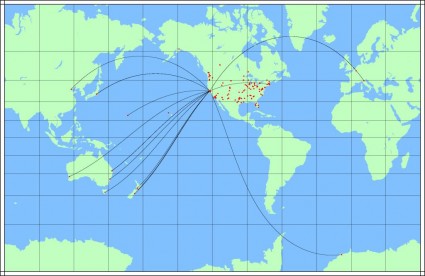Well, after failing on 20m earlier in the day, I waited a bit, until I saw that Felix, DP1POL had shifted from 20m to 40m. I then flipped my beacon/grabber over to 40m, and gave it a try at the 5w power level. And…
| Timestamp | Call | MHz | SNR | Drift | Grid | Pwr | Reporter | RGrid | km | az |
|---|---|---|---|---|---|---|---|---|---|---|
| 2009-03-13 02:10 | K6HX | 7.040031 | -18 | 0 | CM87ux | 5 | DP1POL | IB59uh | 14831 | 155 |
| 2009-03-13 02:02 | K6HX | 7.040031 | -16 | -1 | CM87ux | 5 | DP1POL | IB59uh | 14831 | 155 |
| 2009-03-13 01:54 | K6HX | 7.040030 | -16 | 0 | CM87ux | 5 | DP1POL | IB59uh | 14831 | 155 |
| 2009-03-13 01:46 | K6HX | 7.040030 | -19 | 0 | CM87ux | 5 | DP1POL | IB59uh | 14831 | 155 |
If you look carefully, you’ll see an unusual grid square. DP1POL is operating from the German Neumayer III Station on the Ekstroem Shelf Ice, Atka Bay, in Antartica. Felix will be working their for quite some time, so I will undoutably have multiple opportunities to get him on multiple bands.
Another reason that this contact is significant is that it’s actually my furthest DX, further even than VK6DI. I decided to remake my WSPR spot map:

Hello Mark,
I have only recently been intruduced to WSPR, and I must say I am quite impressed with the results that can be achieved using this mode even under poor HF conditions. Our research station “Neumayer III” has only been opened in February 2009, so we are all still very busy setting up scientific equipment and moving material from our former location to the new base. Nevertheless, I try to monitor the WSPR frequencies whenever possible. The antenna is a T2FD broadband dipole, I have been using different power levels from 1W to 50W. It is good to know that your 5W beacon has actually been picked up here six times within a one hour time period. Now, I’d like to try the WSPR QSO mode. If you’re interested, please let me know.
73 from Antarctica,
Felix, DP1POL (also DL5XL, N5BC).